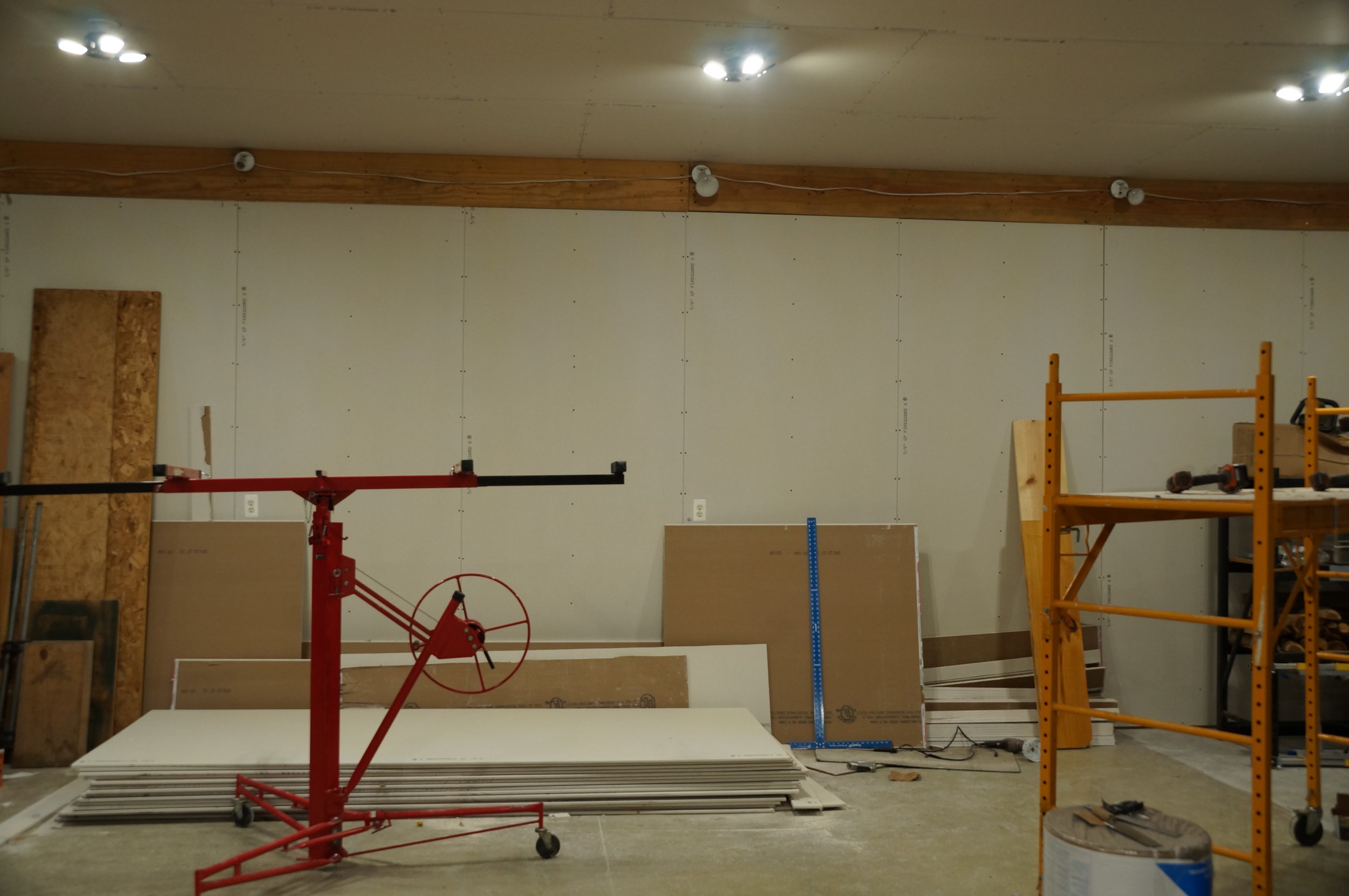
Ongoing or Potential Projects
Current Projects in the Works or waiting to be designed
Turning a pole barn into a temperature controlled “Laboratory” ; There is a lot of drywall to be taped, finished, and painted yet, but it’s coming along. I already have enough shop equipment to build about anything I need. It’s Old School but it works.
High Pressure, High Temperature Test Equipment
I realize that high temperature and pressure are relative terms but I found it a fun challenge to come up with materials, equipment, O-rings and gaskets that would survive at 50,000 pounds force, 1500 psi steam pressure, and 500 degrees F and run that way for weeks at a time if necessary. Most of the “high temperature” materials like O-rings and grease would fail at 450F but through trial and testing I found materials that would hold up. Finally, I believe the equipment is ready and reliable enough for an actual full blown study. One thing I am still not sure about though, is the chemistry. A sudden unexpected exotherm can send the pressures through the roof, what fun.
Is it possible to tell if a fossil fish was buried fresh?
The above fossil was created using 6 fish of the same kind. Four of them were buried immediately after running out of oxygen and two of them ran out of gas and perished a few weeks prior to burial. The matrix is limestone with iron and sulfur added to form Pyrite. Judging from this first attempt, I believe that this would make a very interesting study.
How does Permineralization occur within a Mold Fossil?
The picture on the left above shows small crystals of Pyrite beginning to form on the bones of a fish fossil. The crystals are approximately .0005 inches in length. The picture on the right shows small patches of Pyrite beginning to form under the wing of a Dragonfly. How do the crystals form? How long does it take? Where do the other minerals come from? How are they transported? I have no idea………. YET!!
How deep was a fossil when it was formed?
This is actually a more complicated question than you might first think. One paper I read said that most fossils are formed under great pressure, approximately 3000 pounds per square inch and at temperatures between 450 and 500 degrees Fahrenheit. But “pressure” comes in two varieties. One, is by vertical compression as in a uni-directional force over a given surface area such as 20 feet of dirt placed on top of your body which of course would crush you. The second variety of pressure is 3 dimensional or coming from all directions such as snorkeling in 20 feet of water watching a sea turtle. So if the paper mentioned above is correct, fish fossils were formed under enough dirt pressure to crush them at 3000psi and also enough water pressure to keep the water from boiling at 500 degrees Fahrenheit. One method of testing how deep a fossil was formed might be to measure its density. The deeper it forms, the denser it would be. It might work.
The device above, called a GeoPycnometer, was made in my shop to measure the volume of irregularly shaped objects. It is a piston and cylinder filled halfway with 0.9mm glass beads. You first measure the height of the piston with the beads alone, then bury the rock sample in the beads and measure the piston height again. From the difference you can calculate the volume of the rock. Measure the weight and you can get density. Can we use fossil density to tell how deep it was formed? That remains to be seen………







